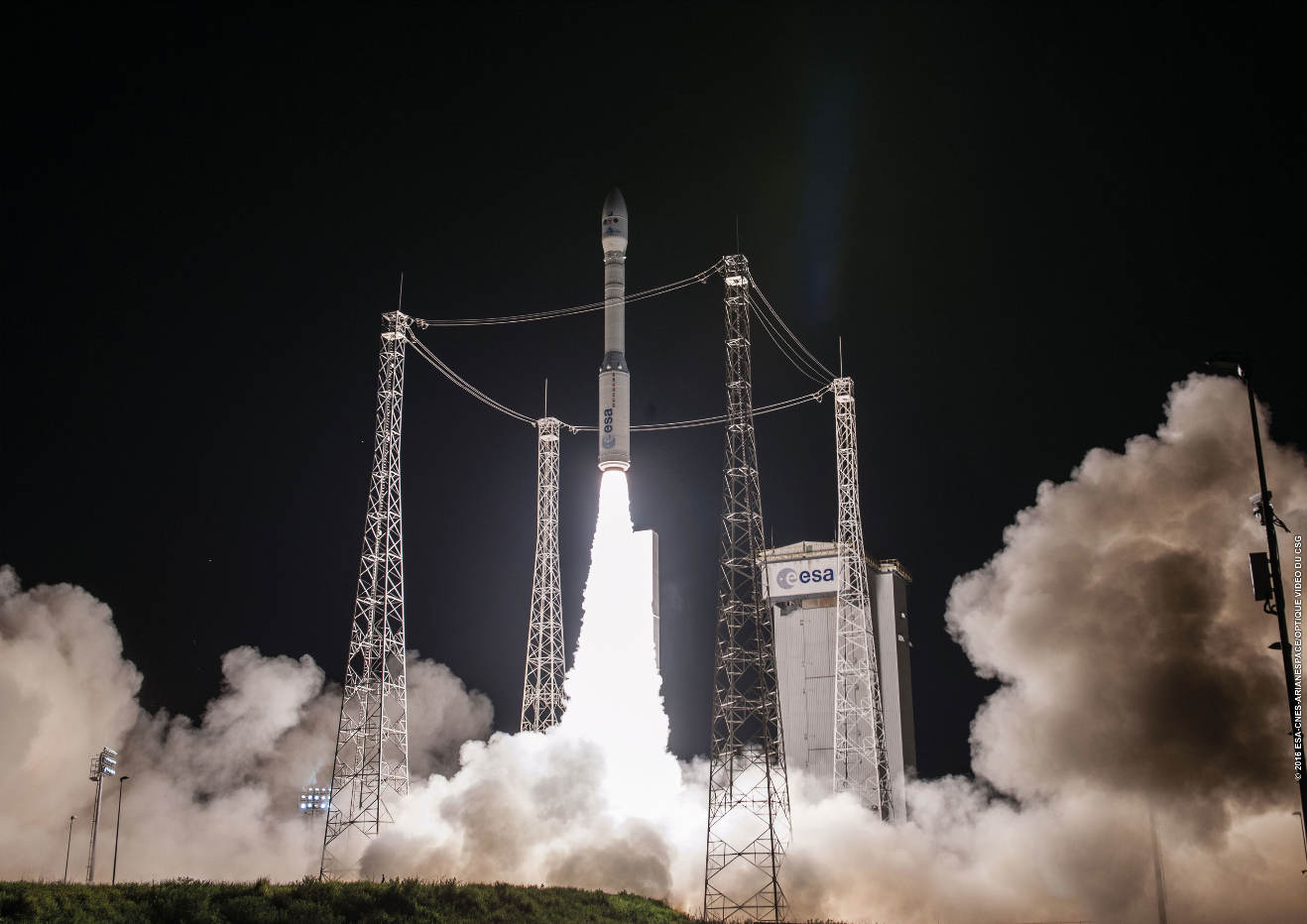Europe’s Vega launcher accomplished a flawless launch from Europe’s spaceport at the Guiana Space Centre (CSG) on 16th September on its first mission of 2016 and its seventh since its maiden flight in 2012. The flight carried five Earth-observation satellites — one for Peru, PerúSAT-1, along with four microsatellites, SkySats-4, 5, 6 and 7.
The microsatellites were released into their target orbit about 40 minutes into the mission. PerúSAT-1 was released 62 minutes later.
With a launch mass of around 430kg, PerúSAT-1 is a satellite built by Airbus Defence and Space for CONIDA, the Peruvian space agency. It is Peru’s first very-high-resolution optical Earth-observation satellite, carrying a latest-generation sensing instrument. PerúSAT-1’s mission will be to acquire imagery of the globe from its 695km operational orbit. It has an expected service life of 10 years.
The four SkySats microsatellites to be operated by Earth-observation company Terra Bella each weigh 110kg, for a total launch mass of 440kg. They will join the three other Earth-observing microsatellites already operating after being injected into a 500km Sun-synchronous orbit from where they will map the planet’s surface in 3D at high resolution.
Vega is a 30 m-high, four-stage vehicle designed to accommodate small scientific and Earth observation payloads of 300–2,500kg depending on the orbit and altitude. Vega is provided to Arianespace by Italy’s ELV S.P.A., which is the industrial prime contractor. It complements the medium-lift Soyuz and heavyweight Ariane 5.

